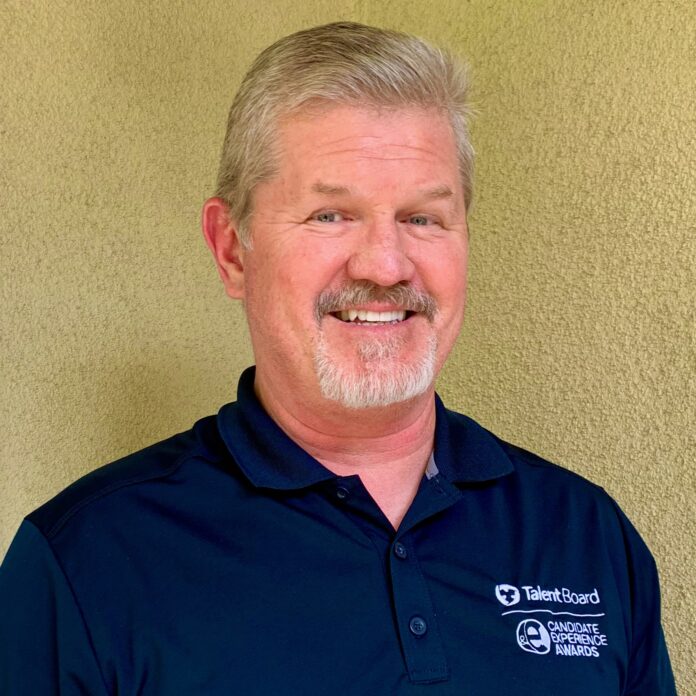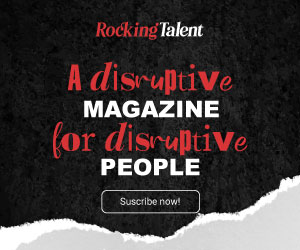Constant feedback and communication are just some of the factors that talents look for the most when evaluating organizations. Kevin Grossman, Chairman of the Talent Board and an Employee Experience expert, shared his experience leading the Candidate Experience Awards around the world and why the ground gained by empathy in the last year cannot be lost.
BY: Leila Ovando
- What are The CandE Awards and how did it come about?
Founded in 2011, Talent Board and the Candidate Experience Awards is the first non-profit global research organization focused on the elevation and promotion of a quality candidate experience. For over 10 years we’ve been delivering annual recruiting and hiring industry benchmark research that highlights accountability, fairness and the business impact of candidate experience. We conduct our annual research each year in North America, Latin America, EMEA and APAC.
The co-founders of the CandEs as we’re known (short for Candidate Experience) — Elaine Orler, Gerry Crispin and Ed Newman — are all recruiting industry luminaries. They saw a need to highlight not only what’s broken in recruiting and hiring, but to also highlight those companies improving recruiting and the candidate experience. I was one of the early volunteers that helped to develop the program and eventually was hired on full-time to run the organization.
First and foremost our CandE benchmark research program helps companies identify their recruiting strengths and weaknesses and how they impact their candidate experience for both external and internal candidates (current employees). We also help companies identify perception gaps — how they rate their recruiting and hiring delivery versus how their candidates perceive their experiences.
- What are the common denominators that you see in both sides, employees and employers, in the different organizations you work with. What do they value the most?
Sustaining a great candidate experience means companies can never just stop making improvements. The minute they do, their competitors will pass them by. Here are five key differentiators of CandE Award-winning experiences that companies can and should leverage to keep that from happening:
1. Consistent communication from pre-application to onboarding
When candidates and employees are communicated with throughout the recruiting and hiring process — and this includes automated messages and human interaction — then they tend to rate their experience more positively and the perception of fairness is higher. Especially when
2. Setting better expectations about the recruiting process
Communication includes expectation setting. Ideally the basic milestones of a company’s candidate journey should be outlined on their career site, and they should communicate next steps and timelines whenever candidates reach a new phase of their journey (screening, interviewing, offer, and onboarding). As our CandE research reports have noted, accuracy is paramount in these communications—e.g., if recruiters tell candidates they’ll be in touch two weeks after application but it actually takes four weeks, it undermines the quality of the entire experience.
3. Asking for feedback and provide feedback more often
Candidates appreciate honest feedback about their backgrounds, interviewing skills, resumes, and the like. Equally important, they value the chance to give you their feedback on various aspects of your candidate experience. When feedback was both asked for and offered throughout the attract-recruit-hire process, it overwhelmingly increased the average candidate’s positive impression of the given organization.
4. Holding your organization more accountable
For many candidates, nothing is worse than a recruiting process seemingly devoid of accountability—e.g., recruiters and hiring managers who fail to keep their promises and appointments. Even worse, when it feels like no one is accountable for this kind of poor treatment, candidates naturally assume it’s endemic to the company’ culture.
5. Ensuring a higher level of perceived candidate fairness
A great candidate experience doesn’t equate to happy candidates, because they’re only happy if they get hired, and we know most do not for any given job. So then what’s key is that candidates have a higher level of perceived fairness. Meaning, they were communicated with consistently, expectations were set and kept, feedback was given and received, companies were transparent and accountable, and candidates were given definitive closure when they were no longer being pursued.
- Was the 2020 a real game changer? How?
We all know how the COVID-19 pandemic derailed recruiting and hiring worldwide. Not only that, social and racial injustice and inequity, long gone unaddressed, caused even further upheaval for employers worldwide. Despite these uncertainties and hardships they all caused, and continue to cause, a number of employment brands responded admirably and in a way that will long outlast the current upheaval: they raised transparency and empathetic communication to a whole new level.
For example, soon after the lockdowns started last year, companies quickly posted COVID-19-related statements on their main websites and Careers sites (e.g., Sprint, New York-Presbyterian, and Sharp HealthCare). Others informed internal and external candidates whether hiring was continuing (AT&T, E&J Gallo Winery, and West Virginia University) or on hold. Others communicated new sets of protocols around virtual hiring (Syneos Health). And still others began using more empathetic language than usual on their Careers sites and in candidate communications, expressing their concern for candidates’ wellbeing and their resolve to work through recruiting-related challenges as swiftly as possible.
One big consequence of these efforts: they’ve set a new standard for what defines a great candidate experience going forward. Now that candidates have tasted this kind of heightened transparency and empathy from employers, there is no going back, folks. Or, should be no going back.
Look at how candidates responded. Going way beyond mere appreciation, since so many people had lost their jobs, they adopted a more forgiving attitude toward employers—something we can actually measure by comparing candidate journey NPS ratings over the past few years.
In 2019, for example, employers rated their candidate journeys higher than candidates did. In 2020, however, this changed dramatically. The perception gap between employers and candidates leveled out, nearly vanished, or actually flipped to the positive side at pretty much every stage of the candidate journey (except when candidates were rejected, which is typical and expected). It’s worth noting that while specific ratings might differ from region to region, the overall pattern of perception shifts is essentially the same in all of the regions analyzed by Talent Board.
These shifts are directly attributable, at least in part, to employers’ heightened transparency and empathy, which is all the more remarkable given that they happened during a year when employers turned away record numbers of candidates (due to spiking unemployment).
Clearly, transparency and empathy have changed the game and, if companies want to compete with the CandE best, they’ll need to implement both across their employment brand’s assets, channels, and strategies. And again, I want to stress the empathy in company communication and feedback. More than merely being considerate and respectful, empathetic communication demonstrates clearly that companies understand and are acting in accordance with candidates’ needs and desires as well as their own. It might mean acknowledging when and why a company’s process seems slow … or what candidates themselves can do to improve their chances of success … or unexpected factors that have risen mid-process.
- What do you think is the best way to attract talent online?
Companies can gain a competitive edge by making it easier for candidates to research their company. Many employers are still just slapping the basic facts on their career sites and in job descriptions. They can leave them in the dust by providing candidates with deeper insights about the work they’ll be doing for them and how they’ll fit into the company’s mission and overall success. Showcasing a company’s culture, values, and other differentiators will go even further in filling pipelines with qualified talent.
Here are a few insights from our 2020 CandE benchmark research about specific ways to make researching your company easy:
Provide career sites in multiple languages. In 2020, nearly 35% of candidates said they want career sites in multiple languages. Currently, CandE winning companies implement career sites in multiple languages 6% more often than all companies, a stat we expect will only grow in the years ahead. This can also make for more inclusive hiring anywhere in the world today.
Create a presence beyond the career site. Although career sites are still the top destination for candidates doing research (46% say career sites are the most valuable research channel), LinkedIn career pages are in not-too-distant second place (30% of candidates use them). Other valuable channels include job boards (30%), online groups such as Facebook and Yahoo (29%), and employer review sites such as Glassdoor, Indeed, and kununu (24%).
Let the employees speak. Nearly 32% of candidates said they want more information about company culture, and another 32% want more information on why employees want to work for a company and why they stay with that company. In the view of many candidates, employees are the most persuasive and authentic sources for this information, so encourage employees to speak freely about these matters on your career site, in your social media, and across review sites like Glassdoor, Indeed, and Fairy Godboss. FYI, CandE-winners make employee testimonials available 11% more often compared with all other companies with video being the most powerful medium.
Implement a chatbot. Chatbots are not only cost-effective but they’re also a convenience and a time-saver for both companies and candidates. CandE winners utilize chatbots to answer candidates’ questions on career sites 15% more frequently than all others.
Publish a newsletter. If you thought newsletters were dead, think again! More and more companies are publishing career-oriented newsletters to communicate with potential candidates, and CandE winning companies are doing it 40% more often than all companies.
Bottom line, by making it easy for people to research a company and its jobs—no matter where that research takes place—employers will be creating a significant advantage for their employment brand in competing for and converting qualified applicants. Talent attraction is a great place to begin building a competitive advantage—and not just because it’s the initial stage of every candidate’s journey.
Focusing on the Attract stage allows you to reach all of those candidates who do their own research on potential employers—now a hefty 74% of the global talent pool. Equally important, companies will be helping candidates self-select more effectively, i.e., make an informed choice on whether to stay with or drop out of their process before contacting them. With millions of displaced, unemployed individuals currently looking for jobs, effective self-selection can save recruiters countless hours of labor every week.
- What is the best advice that someone has ever given you and would you repeat to the youngest generations?
Lead with empathy and eyes of love and be mindfully present. Always. Be understanding of others’ differences as you’d want others to be understanding of your own.
- From your experience, how do you see the future of work? Is it here already?
I’m no soothsayer, but I do know the future of work (and life) is always now again. Meaning, it’s changing every day, every minute, however subtle and incremental. Changing every day. There are so many things that impact our businesses and lives all the time.
For example, who plans for a pandemic? Suddenly, businesses big and small across industries had to immediately pivot to virtual interviewing and onboarding, if not shut down altogether. For those who could work remotely, businesses became more flexible and let them do it. For those who had to work on site, in the store, in the plant, etc., safety protocols had to be put into place and then changed as the information about covid changed.
We’re also leaning on recruiting technologies more than ever before, with machine learning, natural language processing and AI-related tech helping us source, screen and assess more and more candidates today.
So, yes. It’s here already. And tomorrow it’ll be here again. And the day after that.
Kevin W. Grossman | President of Talent Board





